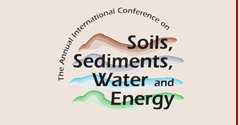Abstract
At the U.S. Army Natick Soldier System Center (NSSC) in Natick, Massachusetts, groundwater is being pumped and treated to provide containment of an historical trichloroethene (TCE) plume. Upon discovering 1,4-dioxane (an emerging contaminant not previously monitored) at one of the monitoring wells above the Massachusetts Department of Environmental Protection drinking water goal of 3 µg/L, the existing on-site groundwater treatment system required augmentation to continue maintaining plume containment and meeting allowable discharge limits. Existing treatment consists of air-stripping and granular activated carbons, which both have a low efficiency for treating 1,4-dioxane. The concentration of 1,4-dioxane in the TCE plume requiring treatment is less than 100 micrograms per liter (µg/L) and approximately 10 to 20 µg/L in the 4 to 6 gallon per minute (gpm) combined discharge stream from three new extraction wells. Because 1,4-dioxane was only identified in a isolated portion of the TCE plume and not in the 75 to 90 gpm flow to the existing treatment system from this TCE plume and others, a goal was to provide in-situ or wellhead treatment for the 1,4-dioxane and not to treat the 75 to 90 gpm flow.
An engineering study was conducted to evaluate 1,4-dioxane and TCE treatment options, with key considerations being that 1,4-dioxane was detected at a low concentration, the extracted water was high in total suspended solids (TSS) and iron oxides, flow-rates needed for containment were small (< 6 gpm), 1,4-dioxane was highly localized, and the size of the physical plant had to be small. Viable options that were considered included the following Advanced Oxidation Processes (AOPs): Fenton's Reagent, hydrogen peroxide with ultraviolet (UV) light, hydrogen peroxide with ozone, and catalyzed persulfate.
Based on the engineering study, ex-situ application of Fenton’s Reagent was selected as a practical cost-effective solution. Bench-scale jar testing demonstrated that naturally occurring iron found in the water was sufficient to provide the metal catalyst needed for the Fenton’s reaction, and that stoichiometrically over-dosing hydrogen peroxide would decrease treatment residence-time necessary for achieving remediation goals and compensate for hydrogen peroxide dissipating side-competition reactions.
Recommended Citation
Kiker, Jackson H.; Connolly, James B.; Murray, Willard A.; Pearson, Stuart C. Pearson; Reed, Stanley E. Reed; and Tess, Robert J.
(2010)
"Ex-Situ Wellhead Treatment of 1,4-Dioxane Using Fenton's Reagent,"
Proceedings of the Annual International Conference on Soils, Sediments, Water and Energy: Vol. 15, Article 18.
Available at:
https://scholarworks.umass.edu/soilsproceedings/vol15/iss1/18
